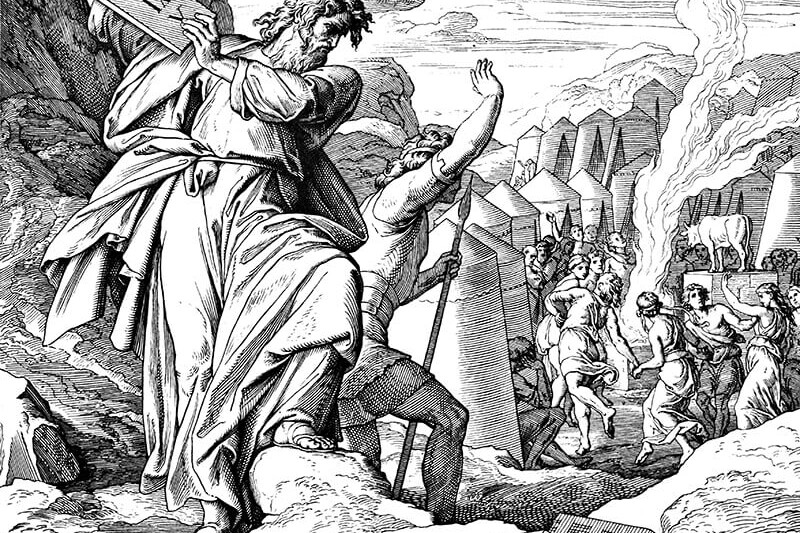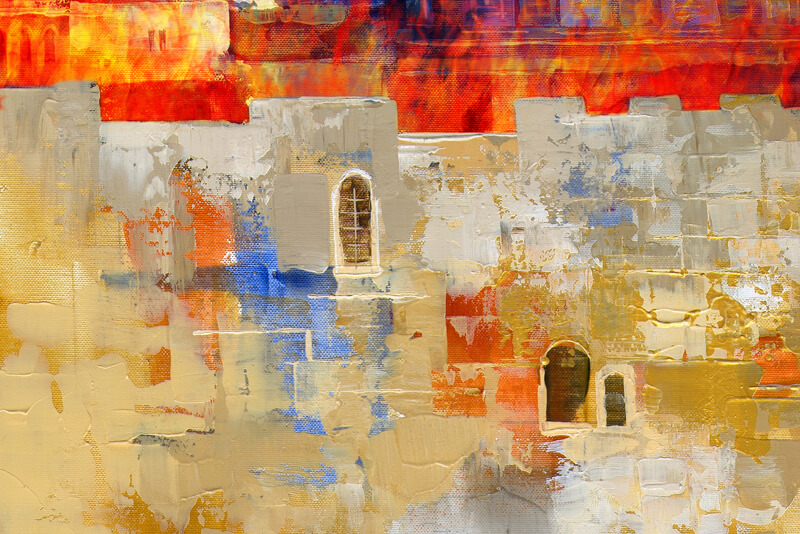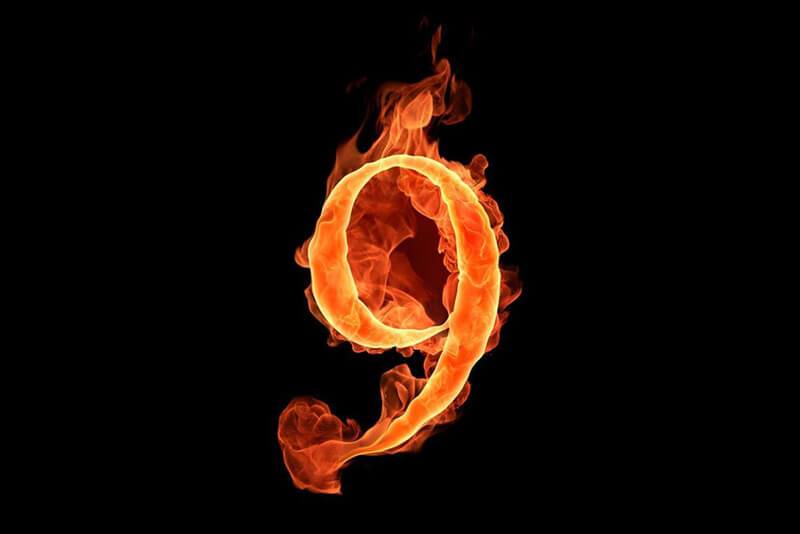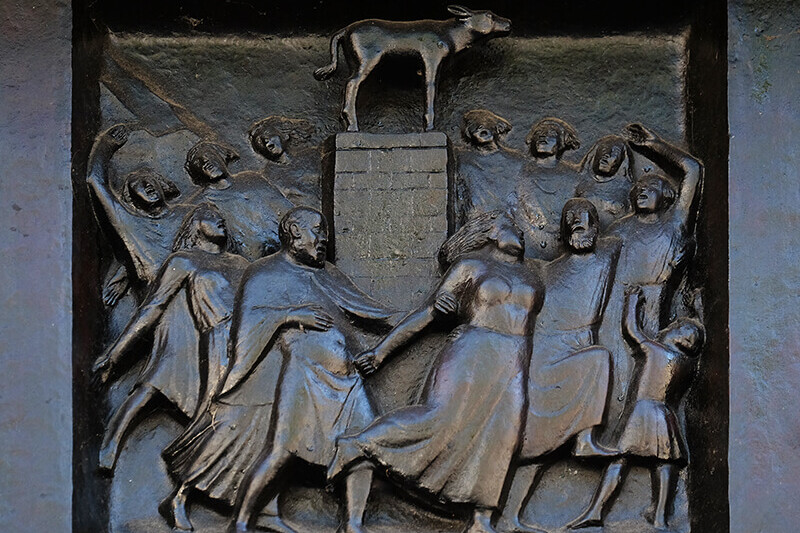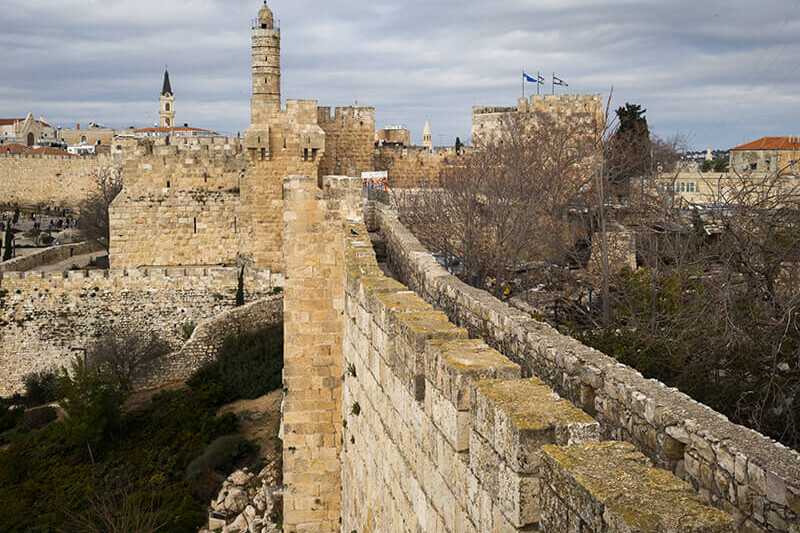Tisha b’Av
The saddest day in the Jewish calendar, believed to be a day which is destined for tragedy.
Guide to Tisha b'Av
The Jewish Treats Guide to Tisha b’Av is your online resource for Judaism’s day of mourning for the destruction of the ancient Temples in Jerusalem. With this eBook, you will discover the significance of the Ninth of Av, explore the history of the day and the ways in which Jews change their lives in order to mourn that which has been lost. Additionally, the guide includes an overview of the period of mourning that follows the days of reflection and despair.
From everyone at NJOP and Jewish Treats, we wish you a meaningful and easy fast this Tisha b’Av.
The Fast of the 9th of Av (Tisha b’Av)
Tisha b’Av, the Ninth of Av, is the saddest day on the Jewish calendar. Jews around the world gather together and mourn their state of spiritual exile, the Holy Temple, destroyed, not once, but twice, and the diaspora that has been the home of tragedy after tragedy.
Even before the great tragedy of the destruction of the First Temple (586 BCE), Tisha b’Av was already marked as a day of sadness. It was on the ninth day of Av that the spies returned to the People of Israel in the wilderness to discourage them from going up to Canaan (Numbers 13,14). Because the Israelites were so easily dissuaded, and so greatly lacking faith in G-d, they were forbidden to enter the Promised Land and destined to wander for forty years until that generation had passed away.
As part of the mourning ritual marking the destructions, the Ninth of Av is a fast day. More than just refraining from eating, Jews spend Tisha b’Av actively mourning.
Prohibitions of Tisha b’Av
- Eating – From sunset on the eve of Tisha b’Av until nightfall the next day it is forbidden to eat.
- Pregnant and nursing women also fast, however, they should consult both a doctor and a rabbi about fasting.
- If you are ill, you must consult a rabbi. If the rabbi says (s)he must eat, they should only eat that which is necessary and should refrain from delicacies.
- Girls below the age of 12 and boys below the age of 13 are not required to fast.
- Drinking – It is forbidden to drink on Tisha b’Av.
- The above exemptions from fasting apply to drinking as well.
- This prohibition includes rinsing the mouth.
- Washing – During the fast, you may not wash for pleasure.
- Those who are dirty, are permitted to wash away the dirt.
- Upon rising in the morning and after using the bathroom, hands should be washed, but only up to the knuckles.
- Hands may be washed for preparing food.
- You may bathe a baby.
- Anointing – You are forbidden to anoint yourself with oil, thus the use of perfumes, make-up, and other such items are prohibited.
- Wearing Leather Shoes – During the fast it is forbidden to wear leather shoes. Some people wear only socks, but others wear shoes of canvas or other non-leather materials.
- Marital Relations are forbidden.
- Studying Torah – Since studying Torah is considered a joyous activity, many have the custom to refrain from it from mid-day prior to Tisha b’Av. Only the following select topics of Torah may be studied:
- The third chapter of the Talmudic tractate Moed Katan, which deals with mourning and excommunication, and other parts of the Talmud dealing with the destruction of the Temples.
- The Book of Lamentations (Eicha) and the commentaries on it
- The Book of Job (Iyov)
- Sections from the Book of Jeremiah (Yirmiyahu) which contain admonition and rebuke
- Greeting others – It is not customary to greet friends or neighbors on Tisha b’Av. Those greeted by others may respond so as not to embarrass the other person.
Tisha b’Av Activities
- Until midday, it is customary to sit on the floor or on low stools, as a sign of mourning.
- On Tisha b’Av night, the regular evening service is recited with the following additions:
- Eicha, The Book of Lamentations which was composed by Jeremiah, is read.
- Kinot, Elegies reflecting the many tragedies, are also recited.
- V’Atah Kadosh, a prayer of selected biblical verses, is recited.
- The synagogue lights are dimmed, or only one small light in the sanctuary is left on.
- During the Tisha b’Av morning service there are several additions:
- Deuteronomy 1:25-40 is read from the Torah scroll, followed by a Haftorah (prophetic message) from the Book of Jeremiah.
- The Tallit (prayer shawl) and Tefillin (phylacteries) are not worn until after noon, since they are symbolic of glory.
- The afternoon service has the following additions:
- Exodus 32:11-14 is read from the Torah scroll, followed by Isaiah 55-56, from the prophets.
- Tallit and Tefillin are worn, since they were not worn in the morning.
- The Nachem and Aneinu prayers are inserted into the silent Amidah.
- After the fast:
- Kiddush Levana (Sanctification of the Moon) is recited.
- It is customary to continue to refrain from meat, wine, pleasure bathing and cutting hair until midday on the Tenth of Av, since the Temple continued to burn until that afternoon.
- When Tisha b’Av falls on Shabbat and the fast takes place on Sunday the 10th of Av, except for the consumption of meat and wine, and the listening to music, all prohibitions are permitted immediately after the fast. Wait for Monday morning for the latter three activities.
When Tisha b’Av Begins On Saturday Night
There are special provisions made when Tisha b’Av begins on a Saturday night and ends at nightfall on a Sunday. Because Erev Tisha b’Av is Shabbat, make the following emendations to the Shabbat celebration:
- Eat the regular three meals of Shabbat (Friday night dinner, Shabbat lunch and Seudah Shlishit). Wine and meat may be consumed in honor of Shabbat.
- At Seudah Shlishit, the third meal, a regular meal is served (may include wine and meat). The special foods symbolizing mourning are not eaten and the meal is not eaten while sitting on the floor. The meal should be completed before sunset (refer to your local candle lighting time).
- Those who do not regularly have guests for Seudah Shlishit, should not invite guests on this Shabbat.
- After Shabbat, only the blessing over the candle is recited for Havdallah, the ceremony separating Shabbat from weekday. On Sunday night, at the close of Tisha b’Av, an abridged Havdallah consisting of the blessing over the wine and the final blessing (Hamavdil) is made.
- Those who are ill should eat during the fast, but should first complete the Havdallah ceremony before eating.
Erev Tisha b’Av, Tisha b’Av Eve, How We Prepare:
- Many have the custom of eating a full meal early in the afternoon so that they will be properly fortified for the fast.
- Seudah HaMafseket (the final meal) is eaten toward the end of the day. This is not a festive meal (except when erev Tisha b’Av occurs on Shabbat. See section below to learn more). Several features distinguish this meal from other meals:
- Do not eat more than one type of cooked food.
- Many eat a hard-boiled egg or lentils, which are customary signs of mourning – round foods represent the cycle of life.
- Some have a custom of eating bread dipped in ashes.
- It is also customary to sit on the floor or on a low stool during the final meal.
- Generally, the seudah hamafseket should not be eaten with a group of three or more people.
The Tragedies of Tisha b’Av:
-
- The Destruction of the Holy Temples – The destruction of both the first and the second Holy Temples were among the greatest tragedies suffered by the Jewish people. While the Temple stood, God’s presence rested in Jerusalem and the Jewish people had a tangible sense of the Divine Presence.
- The First Temple was destroyed
- In the year 586 BCE, during the reign of King Tzidkiyahu, the first Holy Temple was razed by Nebuzaraden, the general of Nebuchadnezer, King of Babylon.
- It was destroyed because the Jewish people had consistently violated three major prohibitions:
- Idol worship
- Murder
- Forbidden sexual relations
- The Second Temple was destroyed
- In 70 CE, the Romans, under the leadership of Titus, destroyed the Temple which had been rebuilt more than 400 years before by Ezra and Nehemia.
- The traditional reason given for the destruction of Second Temple is sinat chinam, baseless hatred.
- Although a period of religious revival was at hand, there was much infighting among the Jews. Instead of focusing on their common enemy — the Romans, Jews demeaned their co-religionists and made false accusations against each other to the Romans.
- The Talmud amplifies the level of sinat chinam with the powerful story of Kamtza and Bar Kamtza. One day a wealthy man had a party and instructed his servant to invite his friend Kamtza. Mistakenly, the servant invited Bar Kamtza, his master’s enemy. When Bar Kamtza arrived, thinking perhaps all was forgiven, the host was enraged and demanded that he leave. Not wishing to be embarrassed, Bar Kamtza asked if he could stay and offered to pay the cost of the meal… half the party… the whole party, but the host refused and had Bar Kamtza ejected, disgracing him in front of everyone present, including many sages. Bar Kamtza was so irate that he went to the Emperor and told him that the Jews were planning to rebel. To prove his contention, he told the Emperor that the Jews would not accept a sacrifice sent by the Emperor. The Emperor then sent a young calf to the Temple, but on the way, Bar Kamtza blemished the eyelid of the cow, rendering it invalid as an offering. After much debate, the rabbis decided that they could not accept the blemished calf. The Emperor’s fury eventually led to the complete destruction of Jerusalem.
- The Bar Kochba Revolt was crushed
– After the Temple was destroyed, some Jews were exiled, while some fled to other parts of Israel. An attempt was made to overthrow the Romans. The Jews were led in their revolt by the great Jewish general, Bar Kochba. On Tisha b’Av, in the year 135 BCE, the revolt was crushed and the city of Betar, Bar Kochba’s last stronghold, was destroyed, resulting in the slaughter of thousands. - The Site of the Temple was Ploughed Over
– Turnus Rufus, a Roman General, ploughed over the site of the Temple and the Romans began to rebuild Jerusalem as a pagan city known as Aelia Capitolina. Their goal was to eradicate Jerusalem from the memories of the Jews, making them easier to subjugate. - The First Crusade
– In July of 1095, Pope Urban II began a preaching campaign to rally the people to battle to recapture the Holy Land, thus unifying Christendom. As the excitement spread and bands of unruly Crusaders gathered throughout Western Europe, the Jews, so easily at hand, became their first victims. - The Expulsion from England
– In July of 1290, the Jews were expelled from England. All of their property was seized by the King. The expulsion was the culmination of pogroms and blood libels that had been common occurrences in medieval England. - The Spanish Expulsion
– In 1492, King Ferdinand and Queen Isabella ordered all Jews to either convert to Catholicism or to leave Spain. The Spanish Inquisition, by which the Spanish monarchs were determined to create a completely Catholic country, had been raging for nearly one hundred years. Any professing Jew not gone from the country by July 30, 1492, Tisha b’Av, would be put to death. In Spain, Portugal, and their respective holdings, the Inquisition continued for centuries against converts suspected of still practicing Judaism. For those Jews who fled, it was the beginning of a period of continuous upheaval. - The First World War
– On August 1, 1914, Britain and Russia declared war on Germany, officially starting World War I. While World War I brought starvation and devastation to all of Europe, the true scope of the destruction of World War I would only be realized two decades later. As historians point out, the unacceptable resolution of World War I was a direct cause of the world-wide economic depression of the 1930’s which gave rise the Nazi’s and World War II. The opening date of World War I, therefore, can also be tied to the horrific events that followed a few decades later. - The Warsaw Ghetto Liquidation
– In 1942, two years after the creation of the Warsaw Ghetto, the Nazis began the liquidations of the Ghetto by transporting the Jews to the Treblinka death camp, to be murdered. Between July and September 1942, nearly 300,000 Jews were put to death.
- The First Temple was destroyed
- The Destruction of the Holy Temples – The destruction of both the first and the second Holy Temples were among the greatest tragedies suffered by the Jewish people. While the Temple stood, God’s presence rested in Jerusalem and the Jewish people had a tangible sense of the Divine Presence.
(The list, unfortunately, could continue with many smaller calamities around the world.)
Rabbi Buchwald's
Tisha b'Av Video Series
Watch the Rabbi’s series of videos on Tisha b’Av and learn about how to prepare, fast, mourn and all about this somber holiday.
